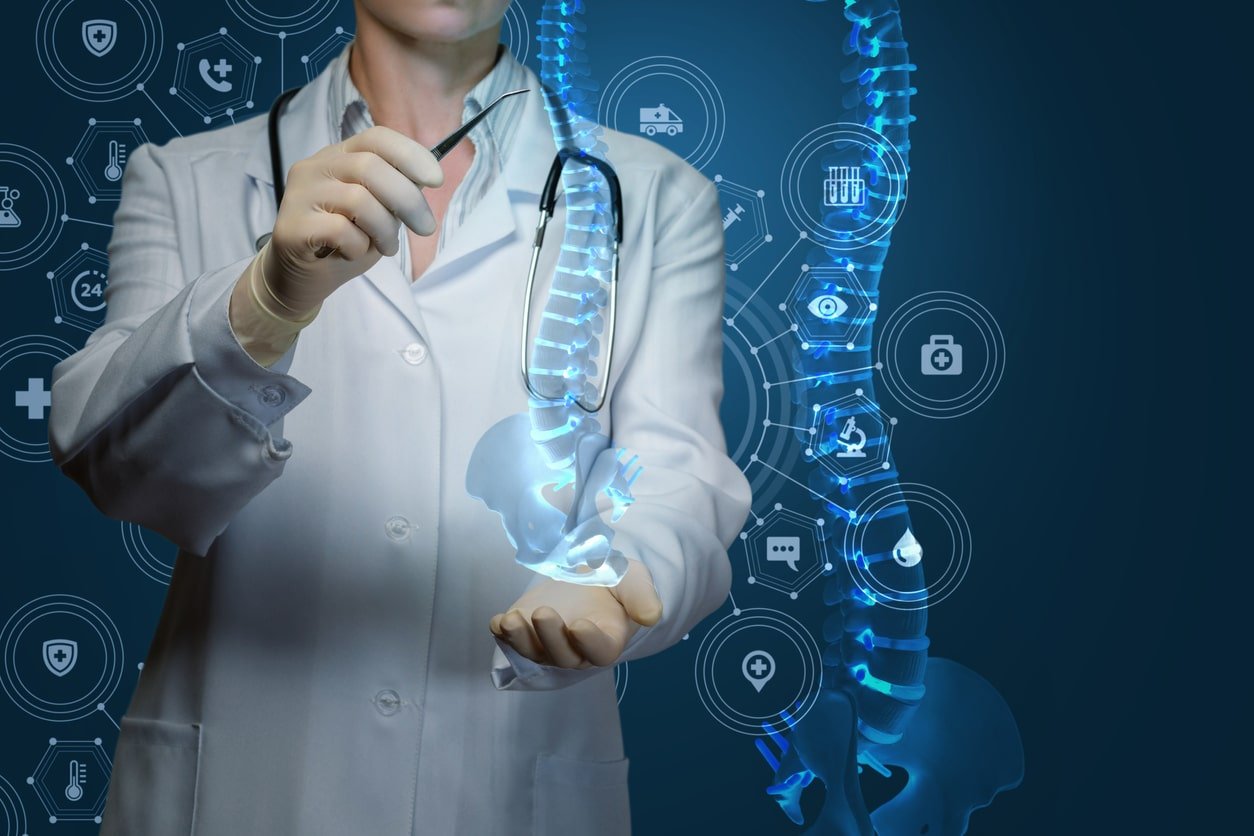The information contained in this coding advice is valid at the time of posting. Viewers are encouraged to research subsequent official guidance in the areas associated with the topic as they can change rapidly.
Sep 09, 2019

Spinal fusion coding is a tough job for coders. There are so many diseases/disorders that result in the need for spinal fusion, and even more choices in reporting the ICD-10-PCS codes. The spine has many demands as it holds up your head, shoulders, and upper body. It allows you to stand up straight and provides flexibility to allow bending and twisting. The vertebrae (small bones in spine) also protect the spinal cord as they are connected. The vertebrae are stacked on top of each other and create the natural curvature of the back.
Most Common Diagnoses Associated with the Need for Spinal Fusion:
- Degenerative disc disease (DDD) (disc degeneration)—often causes weakness, numbness, and pain. DDD is age-related and is when one or more of the discs between the vertebrae of the spinal column breaks down or deteriorates. DDD is not a true disease but develops with aging. When degeneration/DDD occurs, the rubbery, elastic material that provides padding (the discs) between the vertebrae become worn, crack, dry out and no longer offer the protection needed.
- Spinal stenosis—narrowing of the spinal and nerve root canals. Spinal stenosis occurs most often in the lumbar and cervical spine. The narrowing causes pressure on the nerves throughout the spine. Most spinal stenosis diagnoses occur due to something happening to narrow the spine but can be due to being born with a small spinal canal (not common). Common causes are from osteoarthritis/spondylosis, bone spurs, herniated disks, thickened ligaments that bulge, tumors, and spinal injuries.
- Spondylolisthesis—this is a condition when one of the vertebrae slip out of normal position and onto the vertebra below it. This slippage may cause the bone to press on a nerve. There are many types of spondylolisthesis, but the most common are congenital (present at birth), isthmic (results from spondylosis) and degenerative (most common form due to aging after 40).
- Herniated disk/slipped disk/ruptured disk—occurs when the gel-like center of a disc ruptures through a weak area in the tough outer wall, like the filling being squeezed out of a jelly doughnut. When the disk is herniated it can irritate nerves that result in pain, numbness, or weakness of the arm/leg. Some people that have herniated disks experience no pain and is oftentimes an incidental finding during radiology testing.
- Scoliosis—a side-to-side curvature of the spine. In adults this is most commonly due to deterioration of facet joints that cause the spine bones to tilt and shift to one side.
- Lordosis—the spine curves inward at the lower back and is also called swayback. Most commonly this is due to kyphosis, obesity, osteoporosis, and spondylolisthesis.
- Kyphosis—the spine curves forward and shifts the center of balance in front of the hip and is most commonly due to osteoporotic compression fractures and the patient is unable to stand up straight.
- Pseudoarthrosis—this is referred to as non-union and means ‘false joint’. This is the result of a failed spinal fusion.
- Radiculopathy—referred to as pinched nerve in the spine
- Myelopathy—is a very serious condition and can cause permanent spinal cord injury. Myelopathy is caused from severe pressure on the spinal cord from spinal stenosis, spinal trauma, spinal infections, autoimmune disease, tumors, and neurological and congenital disorders. “Myelo” means spinal cord or bone marrow and in the case of “myelopathy” affects the spinal cord.
- Neurogenic claudication—common symptom of lumbar spinal stenosis. The stenosis is causing impingement or inflammation of the nerves emanating from the spinal cord.
These are just the most common causes of spinal surgery/fusions. If coders do not know what the diagnoses are it will be very difficult to know what to report for both ICD-10-CM and ICD-10-PCS. There are multiple Coding Clinics available with guidance for both diagnoses and procedure reporting.
Learn more about Spinal Fusion Coding by purchasing our Spinal Fusion Coding eBook.
Authored by Kim Boy, RHIT, CDIP, CCS, CCS-P
References
Coding Clinic for ICD-10-PCS, First Quarter 2016: Page 17
Coding Clinic for ICD-10-CM/PCS, First Quarter 2019: Page 19
Coding Clinic for ICD-10-CM/PCS, Second Quarter 2018: Page 14 & 15
Coding Clinic for ICD-10-CM/PCS, Fourth Quarter 2017: Page 18
Coding Clinic for ICD-10-CM/PCS, Third Quarter 2017: Page 24
https://orthoinfo.aaos.org/en/treatment/spinal-fusion/
https://www.mayoclinic.org/diseases-conditions/spinal-stenosis/symptoms-causes/syc-20352961
https://my.clevelandclinic.org/health/diseases/10302-spondylolisthesis
https://www.mayoclinic.org/diseases-conditions/herniated-disk/symptoms-causes/syc-20354095
https://mayfieldclinic.com/pe-scoliosis.htm
https://www.cedars-sinai.org/health-library/diseases-and-conditions/s/swayback-lordosis.html
https://www.hopkinsmedicine.org/health/conditions-and-diseases/myelopathy
https://en.wikipedia.org/wiki/Neurogenic_claudication
Subscribe to our Newsletter
Recent Blogs
Related blogs from Medical Coding Tips
Ex utero intrapartum (EXIT) procedures presen...
This is a series of blogs about the importanc...
Facial feminization surgery includes a range ...
Complex coding scenarios often lead to delays...
Subscribe
to our Newsletter
Weekly medical coding tips and coding education delivered directly to your inbox.




